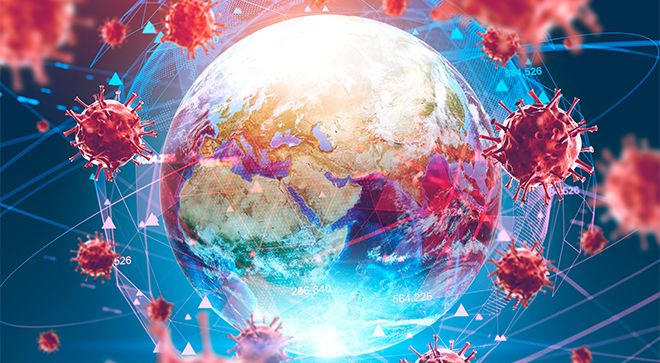Article
Learning How to Treat Cancer Safely and Effectively in the Era of COVID-19
Author(s):
“We're not going to turn our back on our cancer patients, we're not going to make it a choice between COVID and cancer, but rather we're going to make it and we have to treat both,” said Dr. Pat Basu, President and CEO of Cancer Treatment Centers of America.
While the COVID-19 pandemic continues to put a strain on health systems around the world, cancer treatment centers must remain flexible and proactive in order to continue to serve patients in a safe and effective way in the future, says Dr. Pat Basu, President and CEO of Cancer Treatment Centers of America.
In an interview with CURE®’s sister publication, Cancer Network, Basu discussed how his organization helped other treatment centers and health systems weather the COVID-19 storm by creating proactive partnerships, sticking with strict screening and testing protocols, and more. He also went into greater detail about how patients with cancer cannot be forgotten about now that “pandemics are here to stay”.

Basu: I used to work for the White House a decade ago, and so I am on one hand, very sympathetic and empathetic to what it takes to react to a pandemic. On the other hand, transparently, it was very, very challenging for me and other CEOs to procure the right personal protective equipment, as you mentioned.
That being said, because cancer is such a deadly disease and also such a common disease, it is kind of the epitome of a disease not to disrupt. And so, a few things I think certainly could have been optimized.
Number one is, I have friends that are CEOs of a lot of general health systems, and we engaged in proactive partnerships to say, okay, if you guys are handling COVID at your centers, you can transfer your cancer patients to our center because it's a cancer-only environment at Cancer Treatment Centers of America. So that's kind of one example.
A second example is very regimented screening protocols, to really screen patients at a distance based on their symptoms based on travel, based on their temperature, and establish sort of a perimeter.
And then a third aspect would be using testing. We do a lot of rapid diagnostic testing and thankfully, we've had a very safe environment, but we did catch a couple of positive cases outside of the door that we were able to deflect.
And then a fourth option would be telehealth. At Cancer Treatment Centers of America, we did thousands of telehealth visits. Now in cancer, unlike primary care, telehealth is a great option to do what I would call bridging a visit. It can buy you a few weeks, it's obviously not going to (work) if you have a runny nose and you are a non-cancer patient, it would suck to kind of take care of it. But telehealth is a great solution to get you through a few weeks before you can safely be brought in and get the surgery that you might need, the radiation that you might need, or the medications that you need.
As cases of COVID-19 have begun spiking in various areas again, how can we continue to care for patients with cancer while protecting them from this virus? And how could we possibly prepare for another wave of the virus to hit in the fall as has already been predicted?
Yes, we absolutely have to operate under the guidance that we are going to have further spikes as we're having right now. COVID-19 will be with us for certainly the rest of the year, maybe into the next year. Unfortunately, pandemics are here to stay. So, there are going to be other viruses in 2021 and 2022 and we have to take that as a fact, and we have to establish the reality that we are not going to forget our cancer patients. We're not going to turn our back on our cancer patients, we're not going to make it a choice between COVID and cancer, but rather we're going to make it and we have to treat both.
And how do you do that? You do it with very, very strict and safe protocols, that Cancer Treatment Centers of America and other physicians around the country have established, is really having a strict protocol for screening for testing for creating a safe environment meaning restricting visitors or restricting employees that don't need to be there having separate entrances, and really start with the fact that cancer is - if you had to pick between these two, sadly, and the good news is you don't - cancer is the much more common, much more deadly disease.
So, you don't want to have to pick between those two conditions. And so, we have to say, how are we going to take care of our cancer patients in a COVID environment just as we have done, and this is what we're doing.



